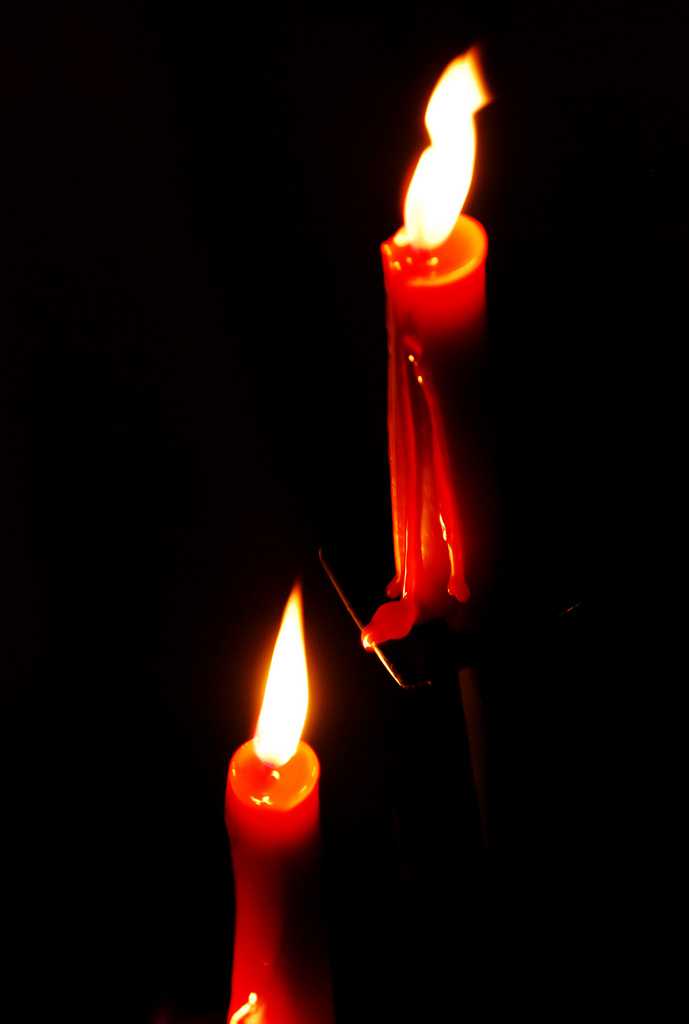FWP:
SETS
CANDLE: {39,1}
EYES {3,1}
Here's a beautiful deployment of classic ghazal imagery. The lover in separation is well known to weep tears of blood; here, the streams of bloody tears from his eyes will be seen (by him) as the melting flow of wax from two candles that have been lit. Here are some of the affinities:
=The candle's 'tears' of melting wax are a sign that it's consuming itself; the desperate lover's tears of blood will similarly consume his heart and life.
=The candle's hot 'tears' are generated by a flaming wick that burns at its center; the lover's tears issue from his burning heart.
=The candle will be burnt-out and 'dead' by morning, just as the lover can hardly hope to live through the endless night of separation.
=The burning candle helps to illumine the darkness of the night; the lover's solitude is so dark and dire that his own radiantly burning tears are his only candles.
Of course, the lover knows his tears won't really bring him any light-- he will only 'consider' [samajhnaa] that they do, by imagining them as candles. We glimpse the depth of his darkness, in which the only light is a deliberately, self-deceivingly imagined one-- and a doomed one, since by imagining his eyes as candles he imagines them as burnt-out and blind by morning. But does that even matter? In such a night, can he even imagine morning at all? (Compare {169,1}.)
A 'stream' of liquid blood will 'flow' steadily out of the lover's eyes, the way liquid wax streams down the side of the candle. But the melting in both cases is a direct consequence of burning: the fiery glow of the 'two candles' of the eyes will 'illumine' the night (or at least, so the lover will imagine).
As a final touch, the lover is seeking to illumine a shaam-e
, 'evening/night of', with sham((e;N , 'candles'. This
isn't exactly a rhyme, but surely it counts as a sort of back-handed phonetic allusion. Similarly, in the first line we have bahne do , and in the second sham((e;N do -- another verbal echo, with the do of course clevery reframed.

Nazm:
That is, in the black night of separation, when the blood begins to drop from my eyes, I will consider that two lamps have been lit in the darkness, and this will be a source of comfort to me. (117)
== Nazm page 117